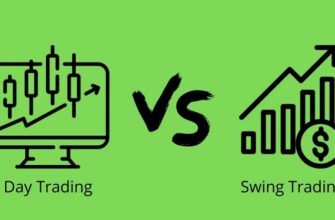is a model for generating income based on the principle of redistributing funds from participants in the lower or initial levels of the pyramid to higher ones. That is, the top of the pyramid always gets more than the bottom levels.
In the wide base of the pyramid, the largest number of involved participants initially gathers, who part with the money in the form of initial contributions in a certain form. These funds are then transferred to the top of the pyramid, where a small number of participants are ranked.
Such a scheme can bring returns of up to 500% for those at the top levels of the structure. The number of people who suffer serious losses averages 80-90%. Contributions from new low-level entrants are stimulated by promises of subsequent large payments or sales revenues. The condition for receiving such payments is the active and constant attraction of new investors.
The main difference between a real business and a financial pyramid is the sources of funds paid to investors. We can say that there are all signs of fraud when the amount of payments exceeds the surplus-value. The main reason the pyramid model still exists and will probably never go away is people’s greed for easy money and a reckless desire to get rich quickly.

Reasons for the appearance of financial pyramids
Financial pyramids are emerging due to the prevailing economic and political situation in society. The main prerequisites for their appearance are:
- availability of a free securities market in the country;
- lack of legislative norms regulating the activities of such structures;
- growth in the population well-being;
- low inflation rate;
- market mechanisms of the economy;
- the willingness of the population to place funds in various financial institutions;
- lack of awareness and low level of financial literacy of the majority of the population.
Types of fraudulent pyramid schemes
Financial pyramids are divided into two main types: open and closed pyramids.
Open pyramids
There in the open pyramid participants know its structure and the ways it works. Therefore, the participants are initially halfway between fraud and legality. But at the same time, the investor, even knowing the structure of the business, in most cases is not aware of the real consequences of participating in this type of business.
There is a lot of controversy about open pyramids. This fraudulent form is very similar to a tiered sales business, where the sellers involved are required to make the first purchase of a product from the structure with their funds to enter the business.
This is often the case in a multilevel trading business. The participants buy X pieces of a certain commodity, and then go bankrupt since they did not find the next participants – sellers, as it was supposed.
An open pyramid is characterized by the deployment of numerous trading cells. The organizers of open pyramids promise great benefits to investors with up to 800% yield in a short time.
Closed pyramids
A closed pyramid is a profit-making scheme based on the fact that there is a person or company who acts as the front door of the system and is the owner of the pyramid. This person or company completes all technical procedures, receives investment from new members, and returns the interest promised to investors.
The pyramid is based on the constant attraction of funds from new investors, and not on investing in various profitable assets. The main instrument of such a mechanism is the issue of securities that have no declared value.
Often closed financial pyramids are disguised as investment funds and various commercial projects. Supposedly, your money is invested in highly profitable financial instruments or “super-profitable projects.”
Closed pyramids are also known as Ponzi schemes. The most famous closed pyramids in terms of the number of victims are the Brazilian company Telexfree and the Portuguese company LibertaGia, which went bankrupt due to the notoriously doomed collapsed system, and where the savings of thousands of people were stolen.
Ponzi pyramids
These fraudulent financial structures are named after Charles Ponzi, who was the author and organizer of the closed pyramid in the early 20th century. Unlike a tiered scheme, this scheme does not require the involvement of new participants.
The participant is required only a significant amount in the form of a down payment. The incentive for a beginner is a “guarantee” of high income after a certain period.
The first investors get high profits, but from the organizer’s funds. Then the principle of mutual information is successfully triggered and new participants with serious sums appear in the pyramid, inspired by real examples of the structure’s “effectiveness”.
Further, the contributions received are used for payments to previous depositors. This cycle continues until the organizer decides to stop the scam and disappear with the money of its depositors.
Propagation of pyramids over the Internet
There are many real and fraudulent projects of this type on the Internet known as High-Yield Investment Programs (HYIP). They last for several weeks. But in them, it is very difficult to achieve a return on investment with such a return.
Their peculiarity is that the organizers of such projects, instead of traditional promotions or goods, offer to purchase some kind of virtual instrument to generate large profits.
The investor is invited to pay the entrance fee, and then actively attract new participants, whose contributions go to the profit of higher-level investors.
For example, when investing USD10000, the investor will need to attract another 8 participants with the same investment amount from each to return the investment with a good return. Participation is like buying lottery tickets. You can win a prize or lose whatever is more likely.
Are all pyramid schemes a scam?
However, not all pyramid-like structures are outright and vicious fraud. This principle is used by many network companies that distribute products and attract new participants to these activities.
Such a business becomes a pyramid as a result of a mistake in project planning. That is, when the funds raised do not give the expected profit and do not cover the obligations assumed by the business organizers.

Pension systems in many countries are also pyramid-like. Pensioners receive pensions from the funds of the working population. The system works flawlessly as long as the number of working citizens exceeds the number of pensioners.
It is not uncommon for such pension schemes to be initially created for fraud. In these cases, there are characteristic signs that should alert potential investors:
- aggressive advertising company;
- promise of high payments well-above-average interest rates;
- desire to hide any information about the company’s activities.
Before deciding to invest in such projects, you need to inquire about the level of profitability in the lending market. If this level is greatly exceeded, such risky investments should be abandoned.
Any bona fide investment company is obliged to provide full information about its activities, balance sheet status, and financial statements. If such information is withheld, then this is a serious reason to think about the legitimacy of the company.
Signs of fraud
In order not to fall into the trap of this type of fraud, you need to know how to detect it. Some of the most important signs are:
- Declared high profitability in a short period. Usually, the proposed type of business is presented as a unique and very profitable opportunity with very attractive profit margins from the outset. This should be suspicious of any investor.
- Attracting new members. If the system constantly needs new members for the system to work, it is better to be on the alert and run away from this business as it looks like a scam.
- The questionable origin of profitability. If the organizers do not explain where the money is invested and how high profitability is created, or they talk vaguely about some innovative business that you do not know, then it is wiser to refrain from investing.
The inevitability of the collapse of the financial pyramid
The financial resources of the pyramid begin to gradually and steadily deplete when all the possibilities for the influx of new investors are exhausted. The founders of the pyramid are no longer able to provide high payouts to most of their depositors. As a result, there is a significant mismatch between the ever-growing financial liabilities and the ever-decreasing monetary base.
Meanwhile, financial liabilities are growing rapidly, and inflows of funds are practically absent. In these conditions, investors begin to worry about the safety of their funds. Various negative rumors, frightening forecasts, and panic moods will naturally spread among them.
Most investors are starting to get rid of their securities. This leads to a sharp drop in their exchange value and an almost complete depreciation. As a result, the pyramid collapses due to the inability to maintain the level of liquidity and market value of fraudulent “securities”.








